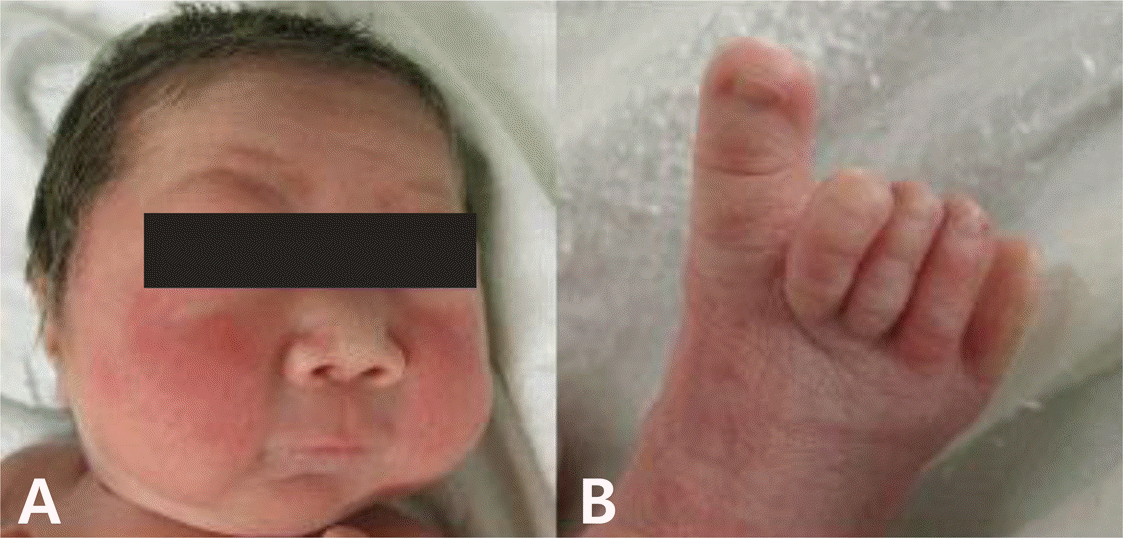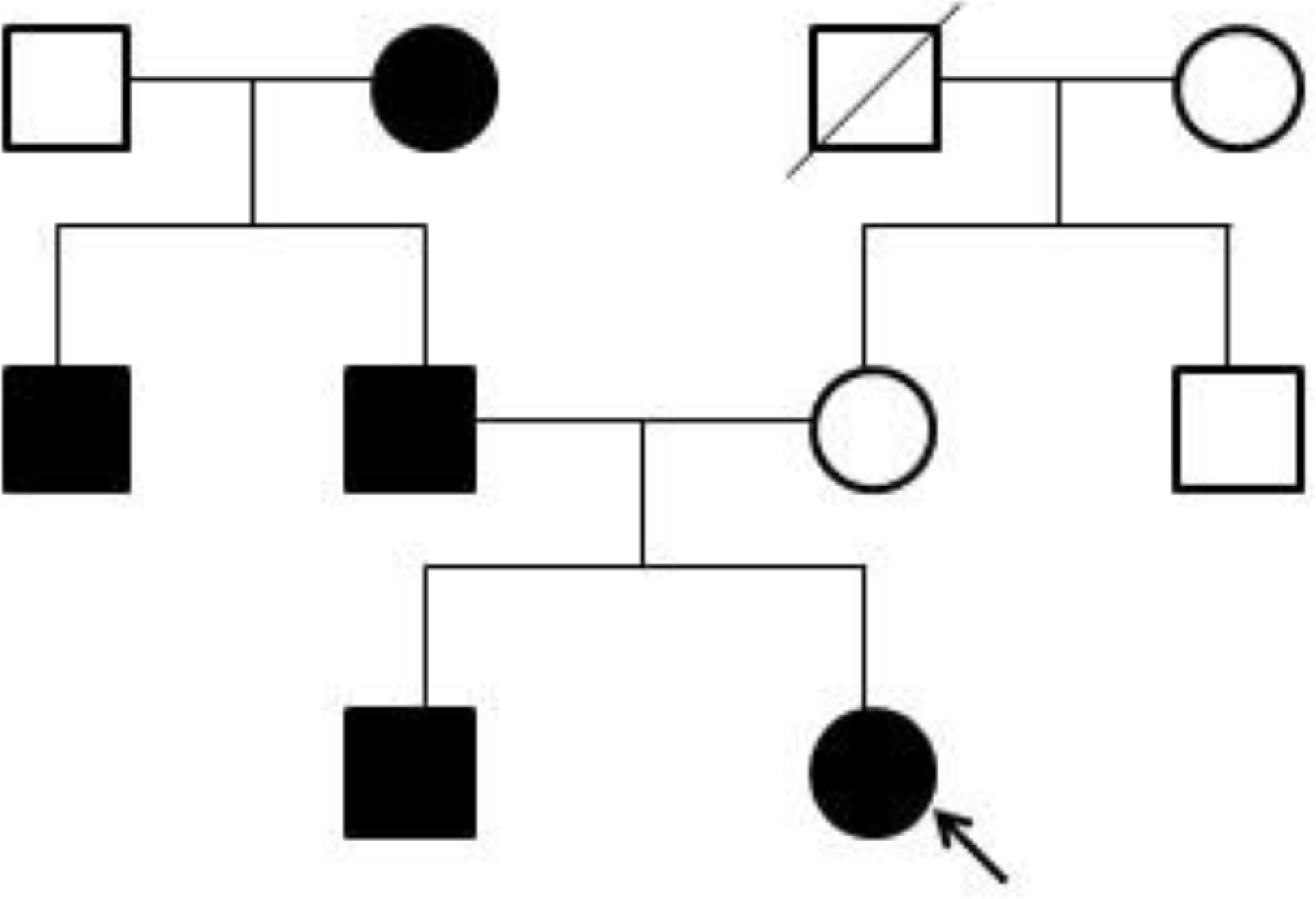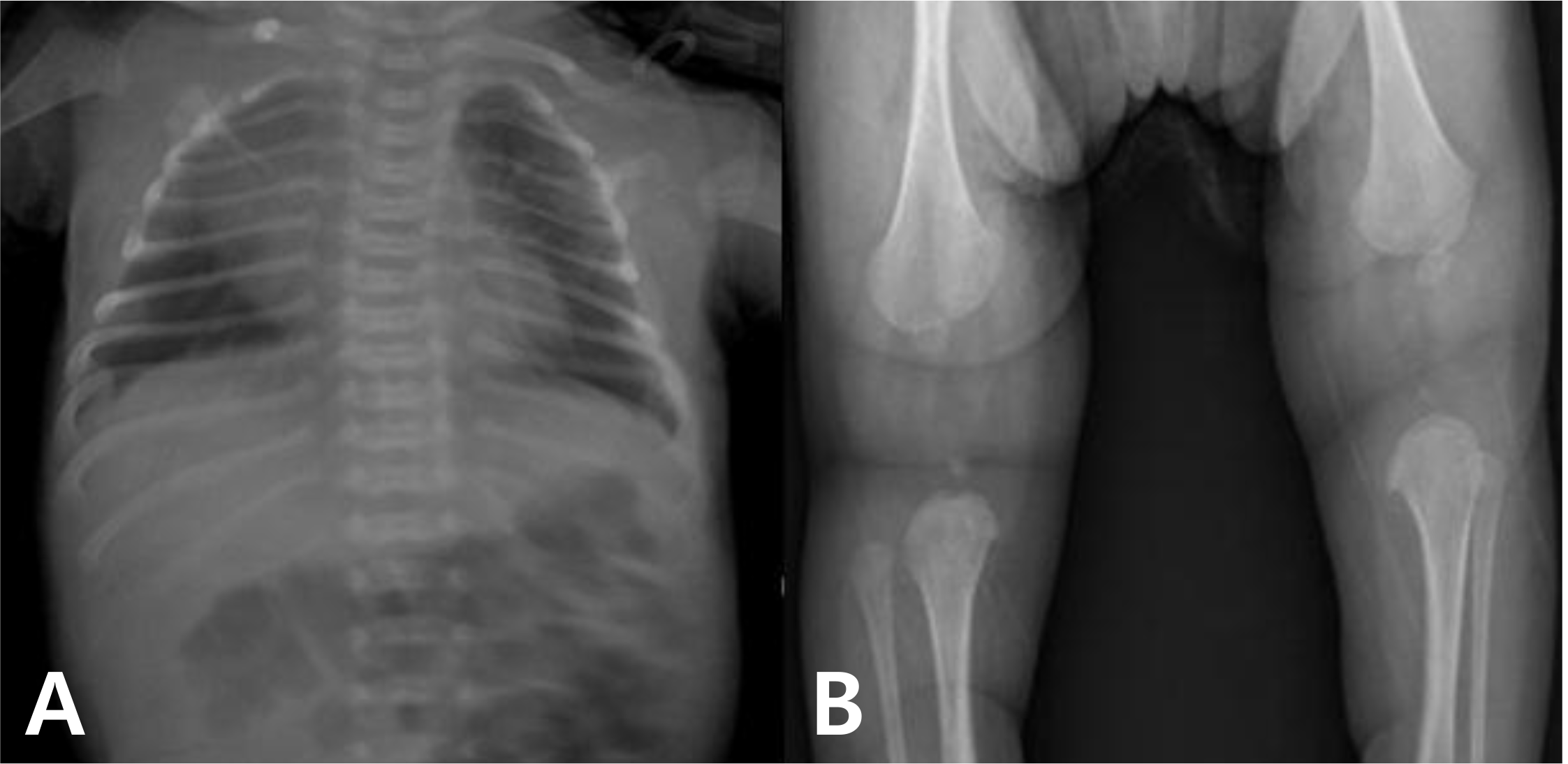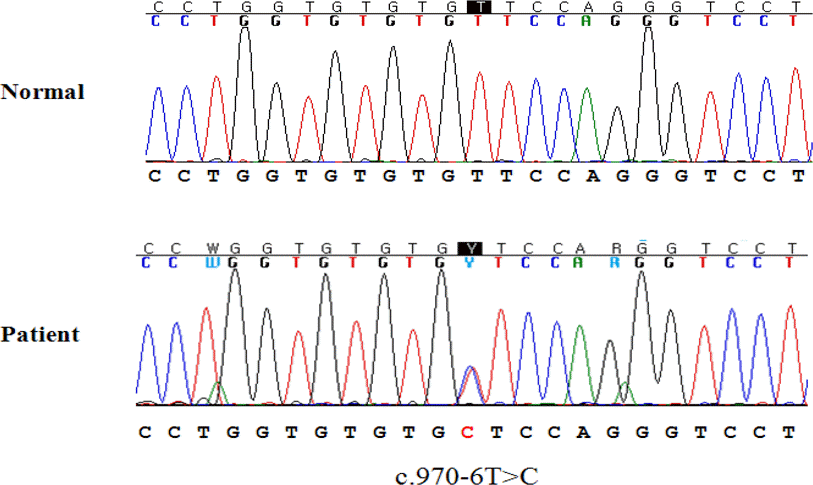Abstract
Stickler syndrome is a progressive, hereditary disorder of connective tissue caused by mutations in different collagen genes. It is characterized by distinctive ocular, auditory, skeletal and oro-facial abnormalities and associated with long-term respiratory, nutritional, and developmental difficulties. Therefore, early detection and early treatment of Stickler syndrome is very important. We reported a case of Stickler syndrome in a newborn with family history andCOL2A1 gene mutation.
Go to : 
REFERENCES
1.Stickler GB., Belau PG., Farrell FJ., Jones JD., Pugh DG., Stein-burg AG, et al. Hereditary progressive arthro-ophthalmopathy. Mayo Clin Proc. 1965. 40:433–55.
2.Stickler GB., Hughes W., Houchin P. Clinical features of hereditary progressive arthro-ophthalmopathy (Stickler syndrome): a survey. Genet Med. 2001. 3:192–6.

3.Lee DE., Kim IT. Stickler's syndrome. J Korean Ophthalmol Soc. 1996. 37:559–63.
4.Lee ES., Kim JA., Jung GY., Choi HS., Park SH. A case of Stickler syndrome with large eyeballs. J Korean Soc Neonatol. 1998. 5:242–7.
5.Choi YH., Shin YS., Lee SY., Pak HJ., Choi GS., Hong BH. An anesthetic experience in a patient with Stickler sydrome: a case report. Anesth Pain Med. 2011. 6:85–8.
6.Lee J., Jung CW., Kim GH., Lee BH., Choi JH., Yoo HW. A case of Stickler syndrome type I caused by a Novel variant of COL2A1 gene. J Genet Med. 2011. 8:125–9.

7.Williams CJ., Ganguly A., Considine E., McCarron S., Prockop DJ., Walsh-Vockley C, et al. A-2-->G transition at the 3′ acceptor splice site of IVS17 characterizes the COL2A1 gene mutation in the original Stickler syndrome kindred. Am J Med Genet. 1996. 63:461–7.
8.Majava M., Hoornaert KP., Bartholdi D., Bouma MC., Bouman K., Carrera M, et al. A report on 10 new patients with heterozygous mutations in the COL11A1 gene and a review of genotype phenotype correlations in type XI collagenopathies. Am J Med Genet A. 2007. 143:258–64.
9.Fraser GR., Friedmann AI., Maroteax P., Glen-Bott AM., Mitt-woch U. Dysplasia spondyloepiphysaria congenita and related generalized skeletal dysplasias among children with severe visual handicaps. Arch Dis Child. 1969. 44:490–8.

10.Van Camp G., Snoeckx RL., Hilgert N., van den Ende J., Fukuoka H., Wagatsuma M, et al. A new autosomal recessive form of Stickler syndrome is caused by a mutation in the COL9A1 gene. Am J Hum Genet. 2006. 79:44–57.

11.Snead MP., Yates JR. Clinical and Molecular genetics of Stickler syndrome. J Med Genet. 1999. 36:353–9.
13.Nowak CB. Genetics and hearing loss: a review of Stickler syndrome. J Commun Disord. 1998. 31:437–53. 453-4.
14.Lucarini JW., Liberfarb RM., Eavey RD. Otolaryngological manifestations of the Stickler syndrome. Int J Pediatr Otorhi-nolaryngol. 1987. 14:215–22.

15.Rai A., Wordsworth P., Coppock JS., Zaphiropoulos GC., Struthers GR. Hereditary arthro-ophthalmopathy (Stickler syndrome): a diagnosis to consider in familial premature osteoarthritis. Br J Rheumatol. 1994. 33:1175–80.

16.Maumenee IH. Vitreoretinal degeneration as a sign of generalized connective tissue diseases. Am J Ophthalmol. 1979. 88:432–49.

17.Pyeritz RE., McKusick VA. The Marfan syndrome diagnosis and management. N Engl J Med. 1979. 300:772–7.

18.Liberfarb RM., Hirose T., Holmes LB. The Wagner-Stickler syndrome: a study of 22 families. J Pediatr. 1981. 99:394–9.

19.Popkin JS., Polomero RC. Stickler's syndrome (hereditary progressive arthro-ophthalmopathy). Can Med Assoc J. 1974. 111:1071–6.
Go to : 
 | Fig. 2.(A) General appearance showing flat nose and micrognathia. (B) Widening between first and second toes, fourth and little toes. |




 PDF
PDF ePub
ePub Citation
Citation Print
Print





 XML Download
XML Download